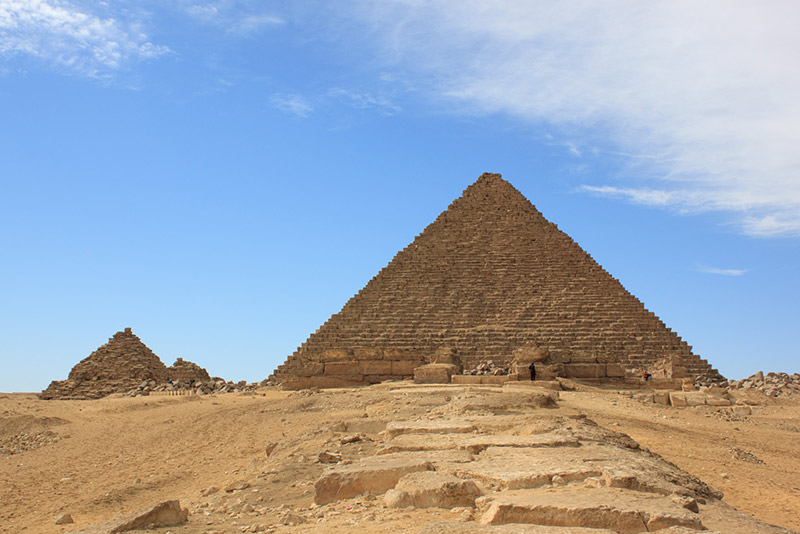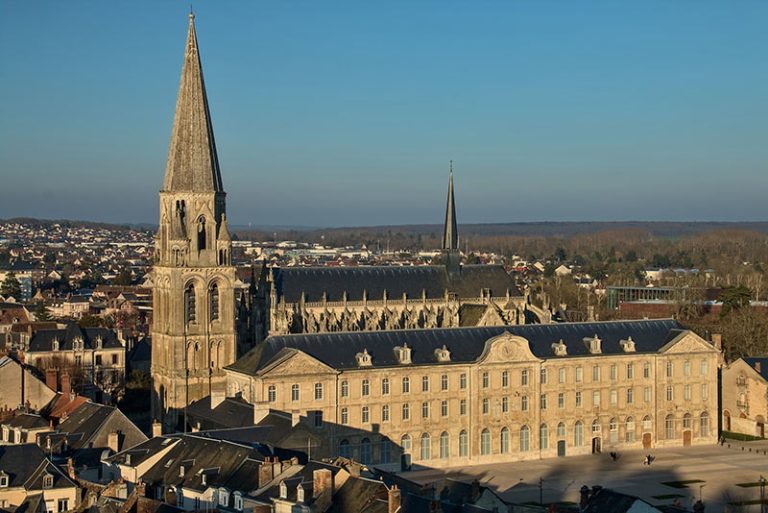Egyptian authorities have decided to restore the granite blocks that once covered much of the Mykerinos Pyramid, the smallest of the three main pyramids on the Giza Plateau. The project was proudly announced by Mostafa Waziri, Secretary General of the Supreme Council of Egyptian Antiquities, in a video broadcast on Sunday (January 25) on Facebook and Instagram. Presented as “the project of the century”the renovation of the pyramid arouses controversy on social networks and even within the scientific community.
The initiative comes from a group of Egyptian and Japanese experts, led by Dr. Sakuji Yoshimura. The project should begin with a year of study of the blocks, carried out by Japanese partners using photogrammetry and laser scanning. The work is planned over three years and consists of recreating an exterior granite envelope on all four sides of the pyramid. Mostafa Waziri assures that this restoration will be made from the original blocks, buried or scattered around the structure.
Archaeologists would be tasked with carefully unearthing and reinstalling these blocks, which the project team believes were displaced during an earthquake less than a thousand years ago. Although only five to eight rows of blocks are still in place today at the bottom of the pyramid, the blocks originally covered approximately the lower third of the pyramid (63 meters high). The Pyramid of Mykerinos – built to house the tomb of Pharaoh Mykerinos during the 4th Dynasty (2575-2465 BC) – is the only one of the three main pyramids of Giza to be covered with several levels of Aswan granite .
The project provokes outrage on social networks. Many commenters reacted with sarcasm to Waziri’s video, comparing the decision to that of “right the Tower of Pisa” or to affix ” floor tile “ on the pyramid.
Many researchers are just as skeptical and are sounding the alarm. Ibrahim Mohamed Badr, professor in the department of restoration and conservation of antiquities at Misr University for Science & Technology in Giza, particularly doubts the original position of the stones – often unpolished – that the team intends to place. “The ancient Egyptians would have polished the blocks when installing them in the pyramid itself” he explains. “Any attempt to fix and polish them would constitute blatant interference with the work of the ancient Egyptians, who did not complete this pyramid”reports the New York Times.
Egyptologist Monica Hanna also questions the merits of this restoration, which she considers to be a serious alteration of the monument listed as a UNESCO world heritage site. “When will we stop the absurdity in the management of Egyptian heritage? » she is indignant, adding that “all international principles regarding renovation prohibit such interventions”. The project would violate several principles of the Venice Charter signed in 1964, which provides an international framework for the restoration, conservation and maintenance of monuments and archaeological sites. The charter stipulates in particular that the restoration must “be based on respect for original materials and authentic documents, and must stop where the questions begin”.
Many critics also question the relevance of such an expensive project given Egypt’s ongoing economic crisis, which sees inflation and debt soaring. Mostafa Waziri gave no indication as to the budget of the project, but affirmed that the first stage will be entirely financed by the Japanese partners. Other researchers have more nuanced comments, while insisting on the need for in-depth analyzes before restoration. Salima Ikram, professor of Egyptology at the American University in Cairo, told Independent Arabia that “the idea of covering the pyramid with stones that fell from it may be acceptable, provided that one relies entirely on the stones found in its environment, without any additions”.
Ancient Egyptian heritage is often undermined. The Old Cairo art center was recently destroyed to widen a highway, as were hundreds of tombs in the City of the Dead – the largest and oldest necropolis in the Muslim world – to build a highway. In January 2024, criticism centered around the restoration of the Abu-el-Abbas el-Mursi mosque in Alexandria, a 15th century monument whose sculpted and colored ceilings were repainted white.







